Intel has officially launched its Core Ultra 200V Lunar Lake processors for laptops. The company claims energy efficiency, a 30% productivity advantage over competitors, and artificial intelligence capabilities.
Intel states there is a 50% reduction in power consumption compared to the previous generation of processors, resulting in double the performance per watt. This translates to up to 20.1 hours of battery life for laptops—better than Qualcomm's Snapdragon X Elite and the new AMD Ryzen AI 300 Strix Point chips. However, Intel has avoided comparisons with Apple processors.
Laptops equipped with Core Ultra 200V from Intel's partners are available for pre-order, with shipments starting on September 24. The company showcased numerous laptops and provided results from its own testing. Previously, Intel shared details about the Lunar Lake architecture and has now presented configurations of specific processors.
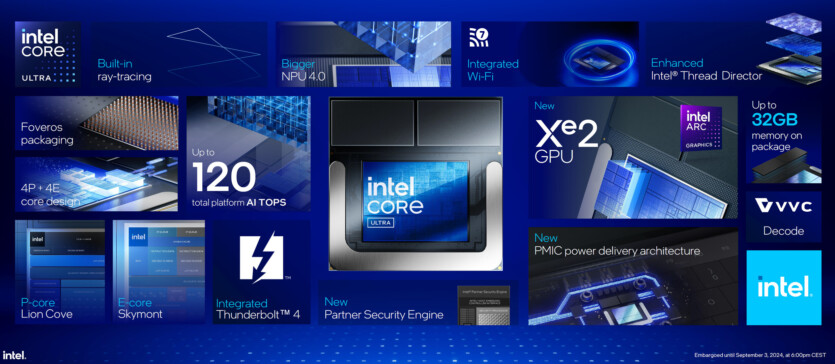
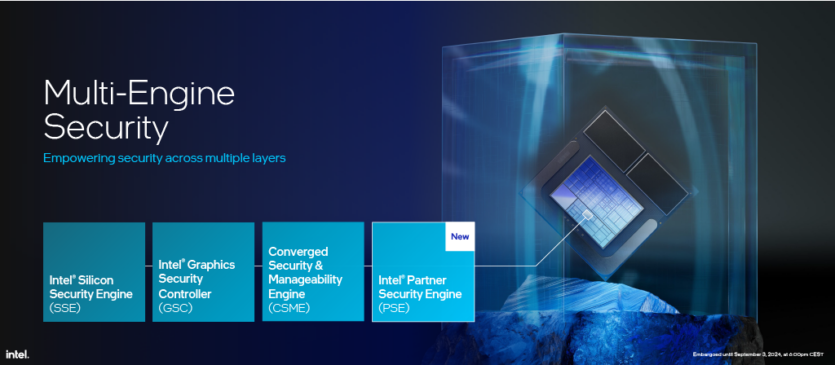

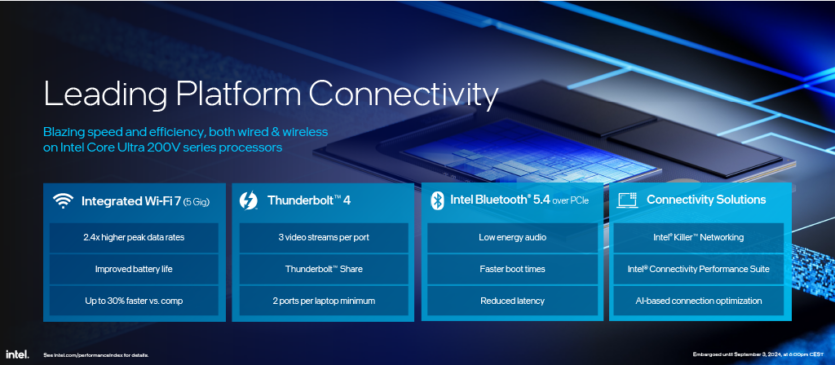

The Lunar Lake processors belong to the Core Ultra 200 series with the suffix V, indicating a new architecture. This suffix is merely a label with no detailed explanation. The series includes nine chips, all featuring four single-threaded high-performance Lion Cove cores (4.5-5.1 GHz) and four single-threaded energy-efficient Skymont cores (3.5 GHz or 3.8 GHz). The processors are equipped with integrated LPDDR5X-8533 RAM available in 16GB or 32GB configurations. The LLC cache (L3) is either 8MB or 12MB, but all chips come with a new 8MB Side Cache, similar to the system cache in ARM processors.
The processors have a base TDP ranging from 8W to 17W (the flagship Core Ultra 9 288V is the only model with a TDP from 17W to 30W). However, the maximum consumption in turbo mode hits 37W for all.
The integrated GPUs of the Intel Arc 100V series are based on the Xe2 architecture and feature either 7 or 8 compute units. The built-in video chips operate at frequencies ranging from 1.85 GHz to 2.05 GHz. These frequencies influence AI performance, which ranges from 53 to 67 TOPS. A separate NPU offers performance at 40, 47, or 48 TOPS, leading to a total maximum AI performance of 120 TOPS.
The Intel Core Ultra 200V processors support 5 lines of PCIe 4.0 and 4 lines of PCIe 5.0, likely intended for systems with discrete graphics cards. They also support up to 6 USB 2 ports and 2 USB 3 ports, along with integrated Wi-Fi 7, 3 Thunderbolt 4 ports (not TB5), and Bluetooth 5.4 LE.
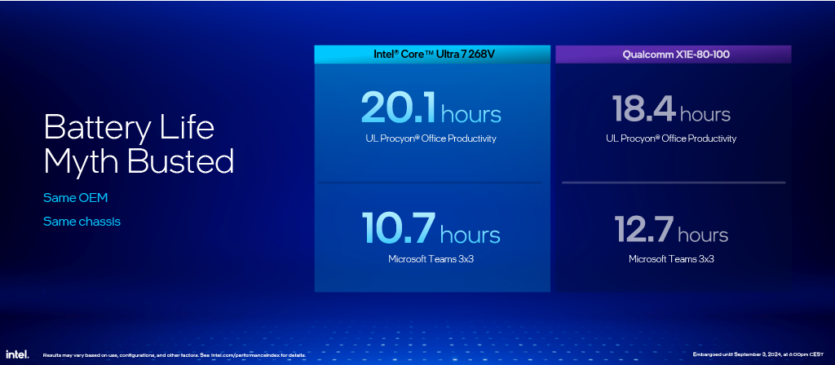
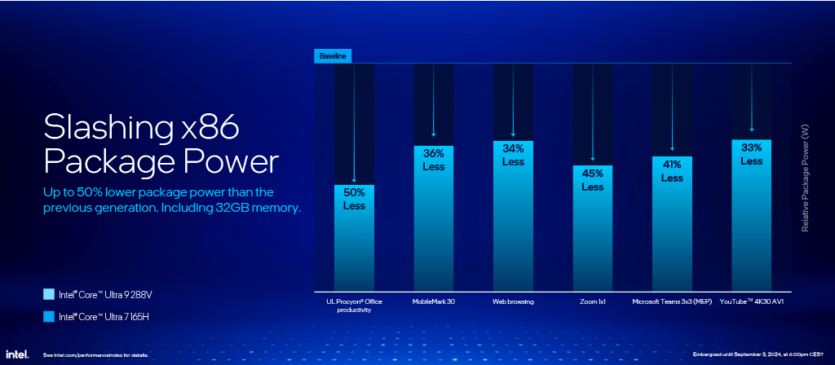
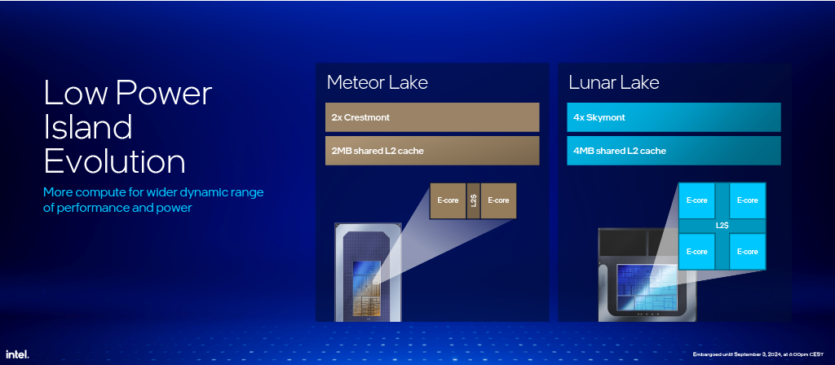
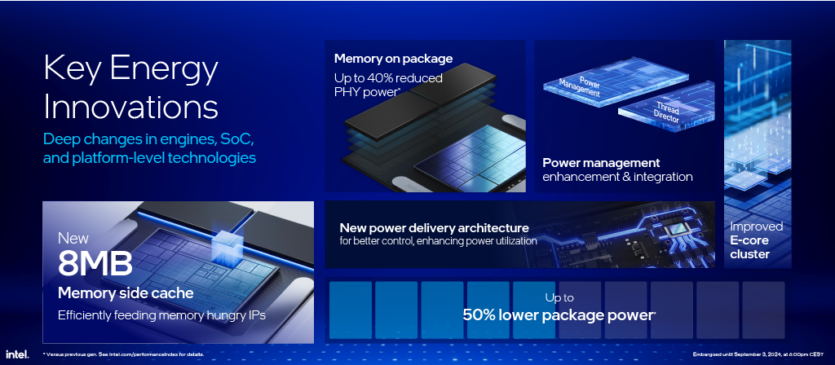
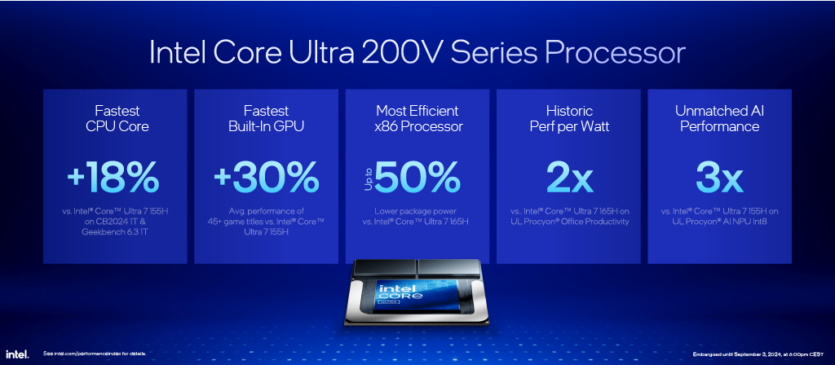
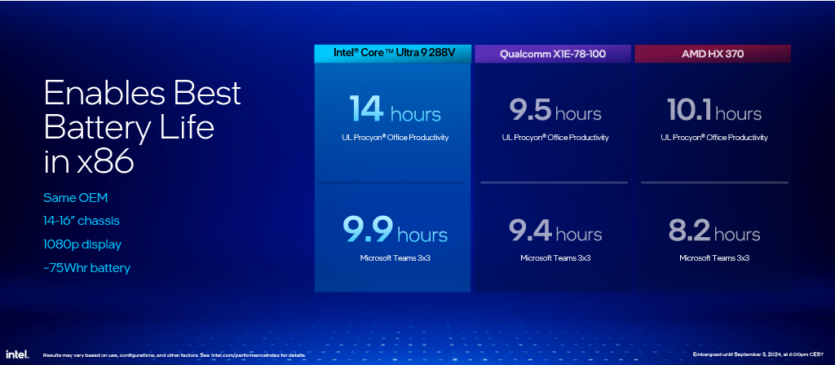

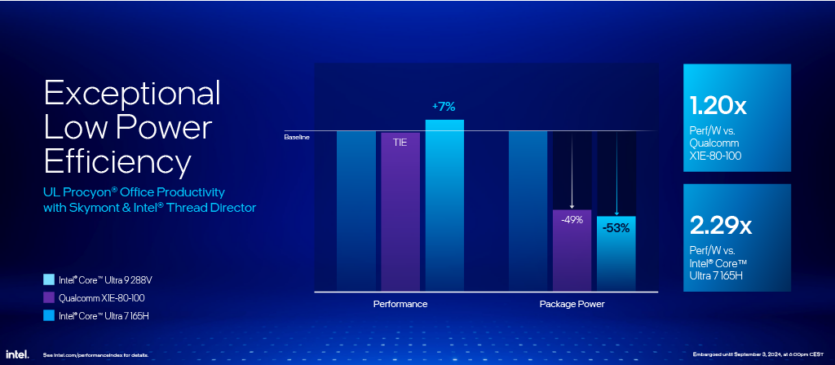
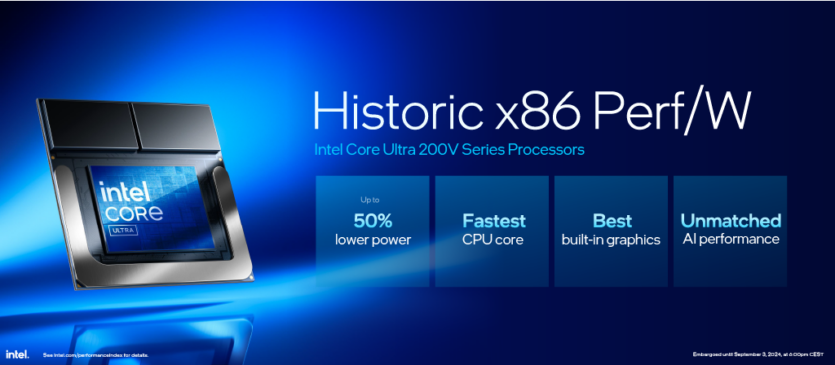
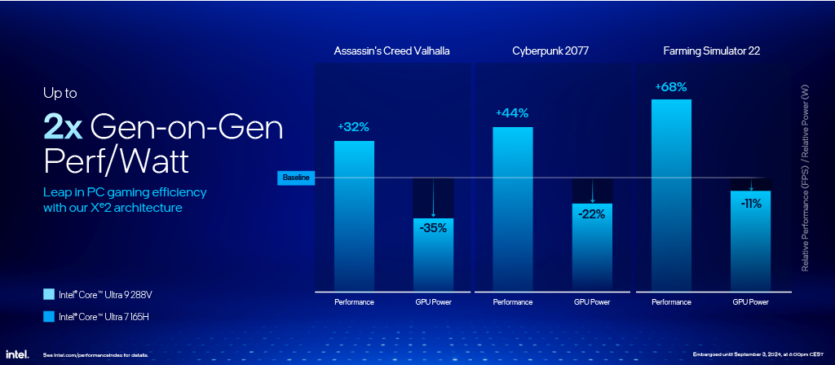
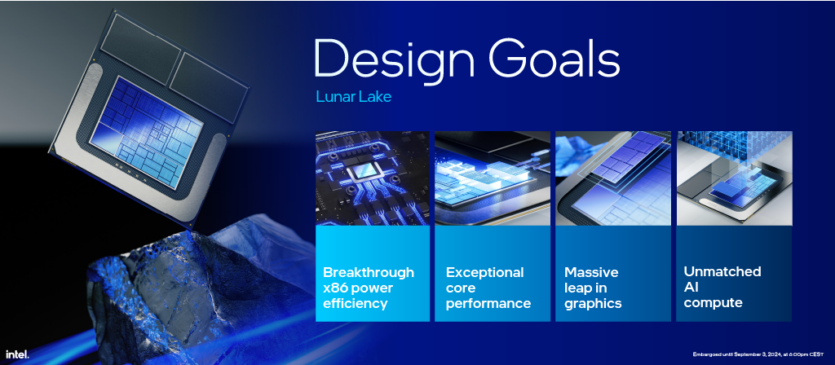
Intel claims "historical" energy efficiency for x86—these processors provide 1.2 times the performance per watt compared to the Qualcomm Snapdragon X Elite X1E-80-100 and 2.29 times more than the Meteor Lake Ultra 7 165H. The company promises up to 2.2 times better energy efficiency over the previous generation and up to 50% less power consumption than Meteor Lake, even accounting for the integrated RAM.
The stated 20.1 hours of battery life for the Core Ultra 7 268V was tested under UL Procyon Office Productivity conditions, and 10.7 hours during a Microsoft Teams call. This outperforms the 18.4 and 12.7 hours of battery life offered by Qualcomm's Snapdragon X1E-80-100 processors. The Intel Core Ultra 9 288V surpassed Qualcomm's X1E-78-100 chip by 4.5 hours and by half an hour for the latter. It also outperformed AMD's HX 370 by 3.9 hours and by 17 minutes.
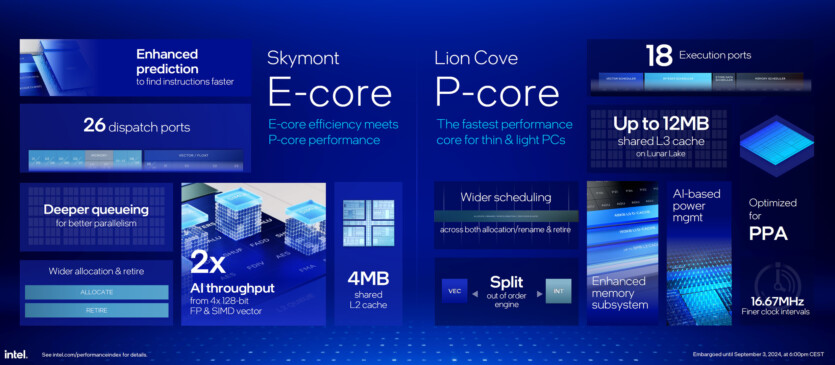


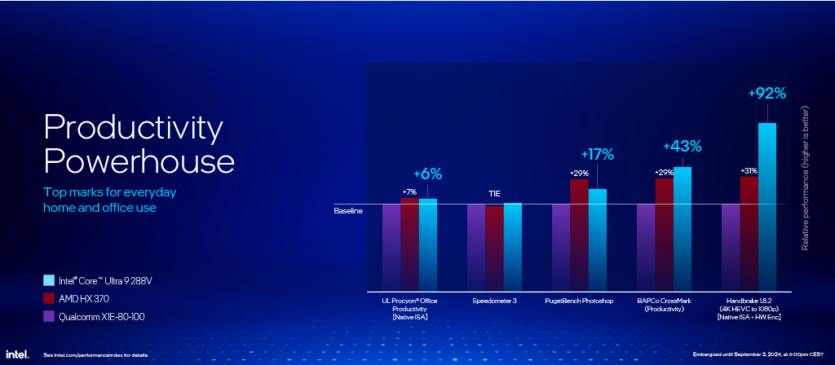
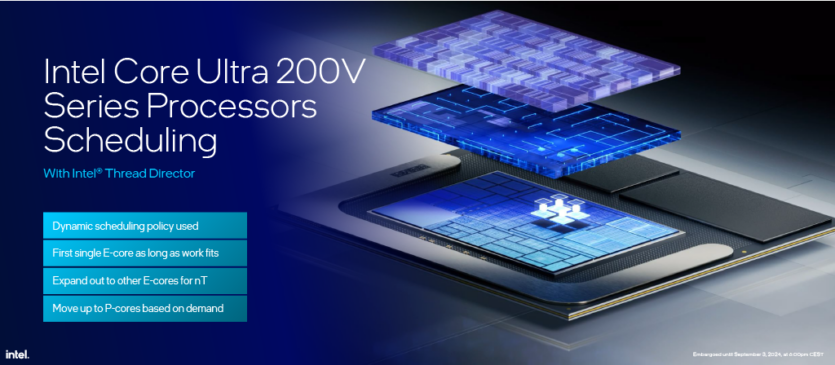
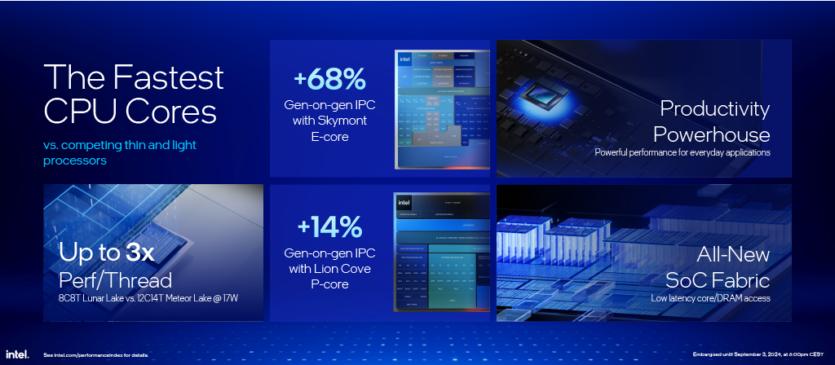
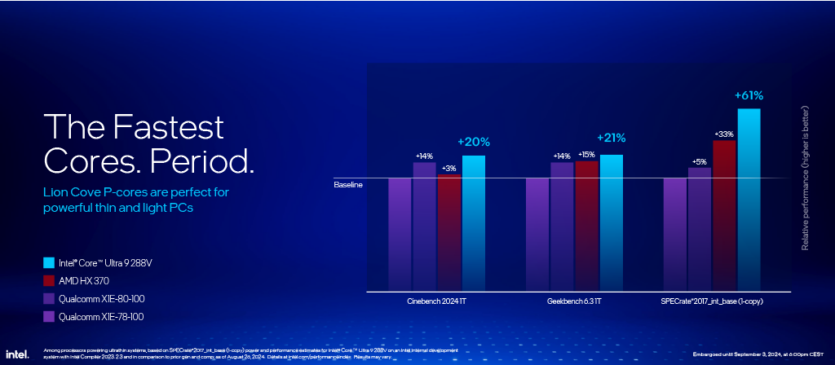
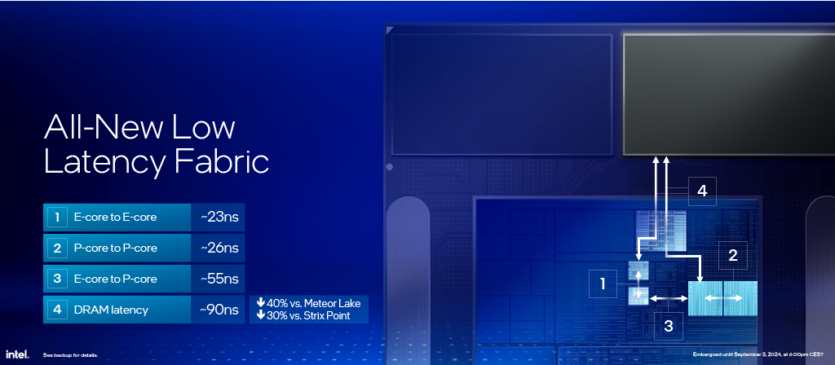

Intel has reduced memory latency by 40% compared to the previous generation and by 30% compared to AMD's Strix Point. The latency for Intel chips stands at just 23 ns for traffic between E-cores and 55 ns from E-core to P-core. In comparison, Intel claims Qualcomm chips have latencies ranging from 150 to 180 ns. The company boasts that the architectural changes give Lunar Lake the fastest processor cores on the market, with single-threaded performance advantages ranging from 20% to 64% compared to Qualcomm's Snapdragon X Elite. They also outperform AMD's Strix Point HX370 in single-thread tasks by 3% to 33%.
Lunar Lake offers between 2.1 to 3.0 times greater performance per thread than its Meteor Lake processors. This leads to an overall performance enhancement ranging from 6% to 22%, but only with eight cores and threads, compared to the 22 threads of Meteor Lake. Intel also presented a performance per watt curve, comparing performance at various power levels against competing chips. Here, an exclusive comparison with Apple's M3 can be observed.
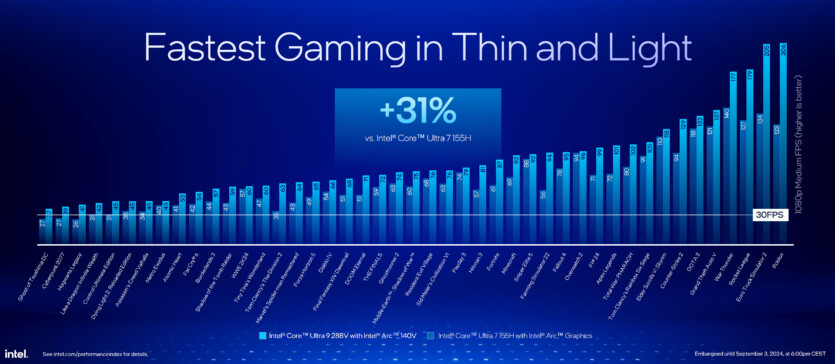
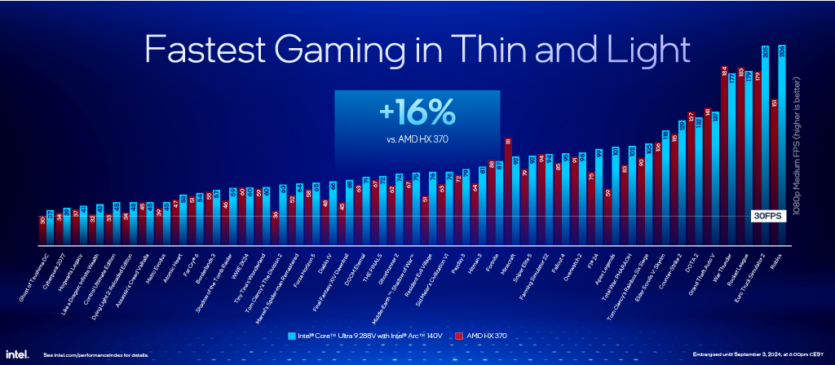
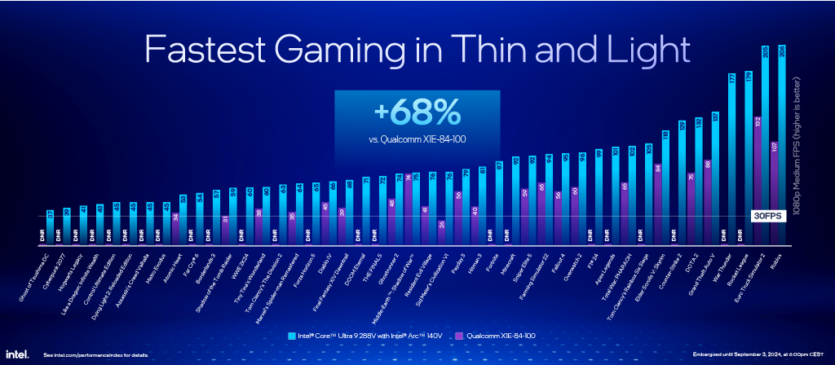
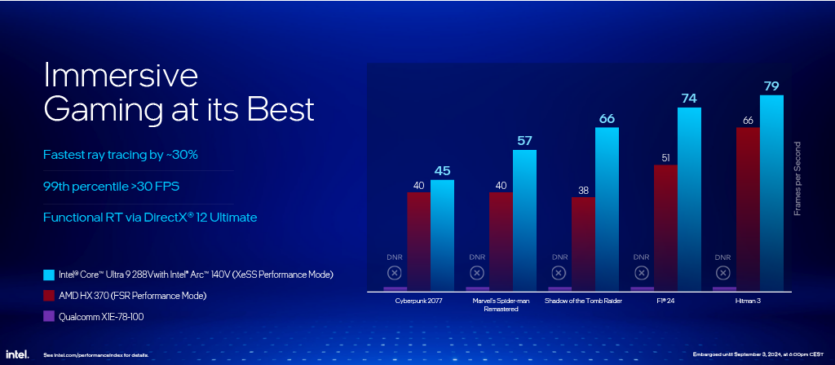
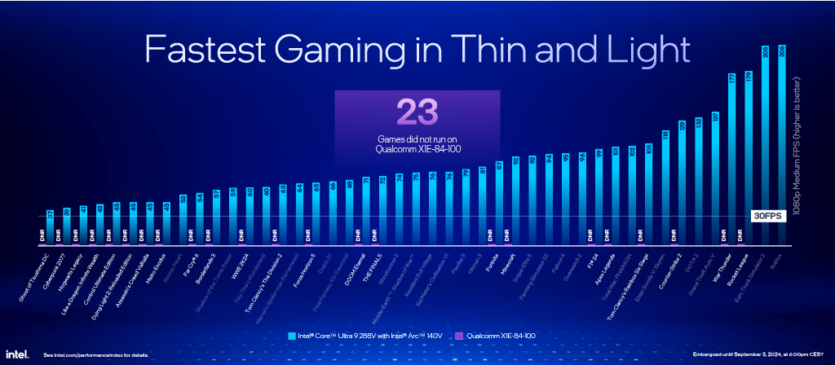

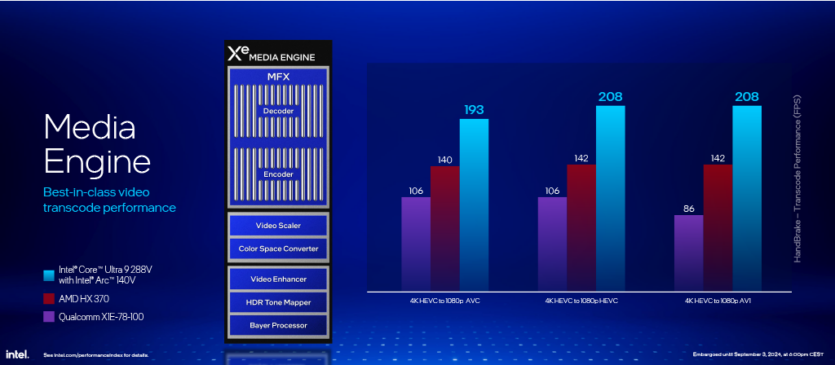
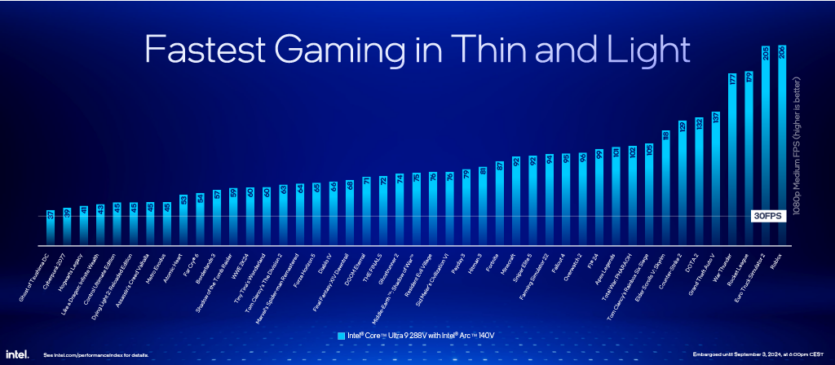
Intel took the opportunity to criticize Qualcomm for compatibility issues with games. The company emphasizes that 23 games do not work on the Snapdragon X1E-84-100. For testing, Intel used 48 games at medium settings and in 1080p. The advantage in gaming performance over Qualcomm stood at 68%. Gains in gaming compare to Meteor Lake showed a 31% increase and a 16% increase over AMD's HX 370.
Intel did not overlook the integration of XeSS support in over 120 games and that the Lunar Lake chips share the same software feature set as its desktop GPUs. The company also claims exceptional ray tracing performance—30% higher than AMD's HX 370 and Qualcomm's Snapdragon X1E-78-100. Additionally, Intel placed significant emphasis on the nuances and performance of AI tasks.
Source: Tom's Hardware






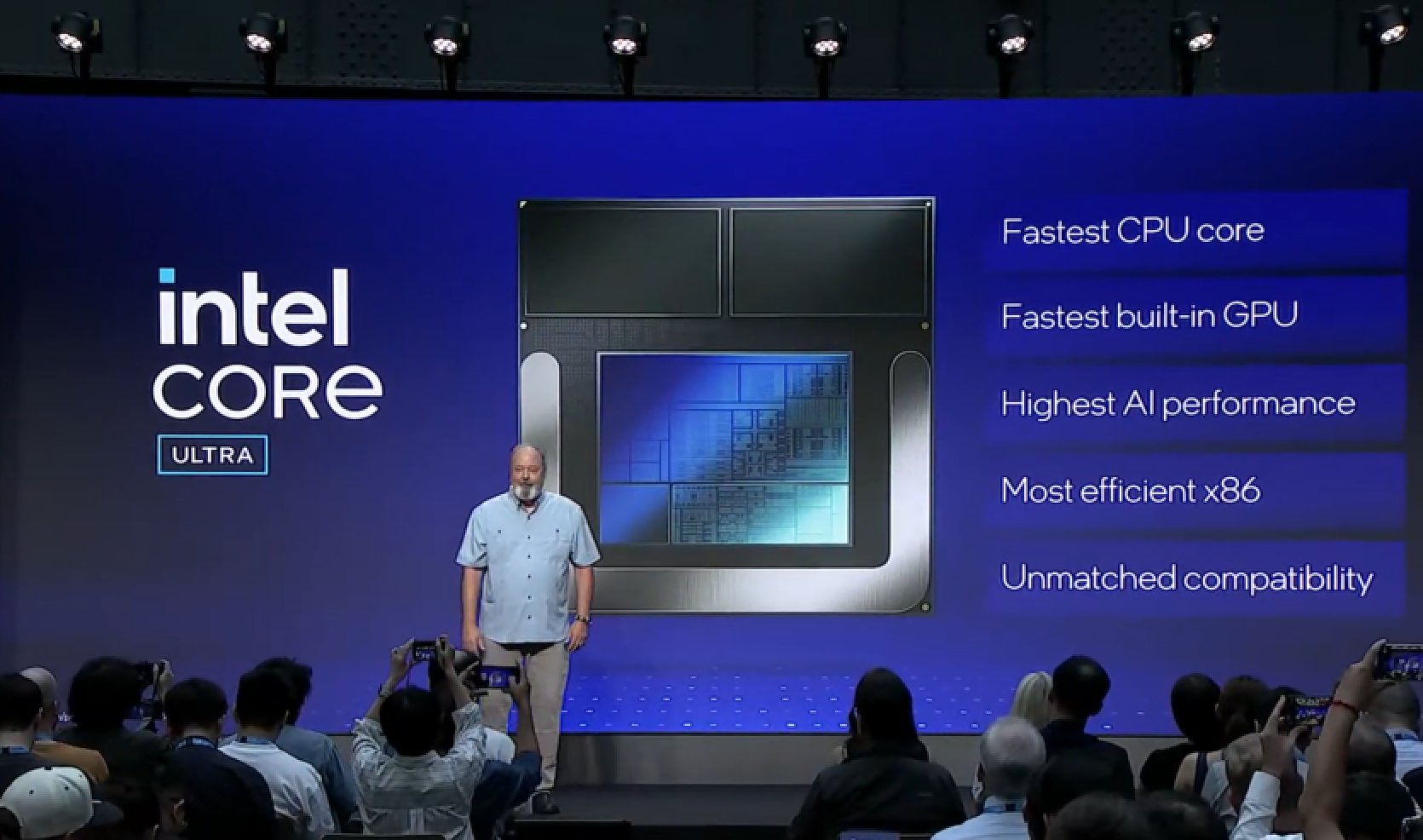





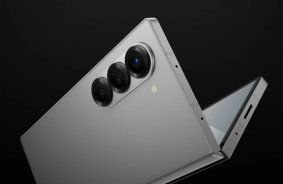

Comments (0)
There are no comments for now